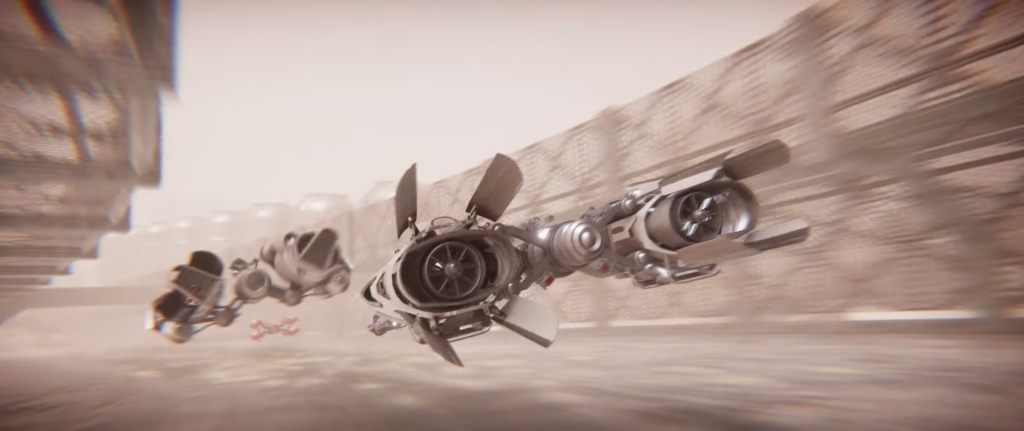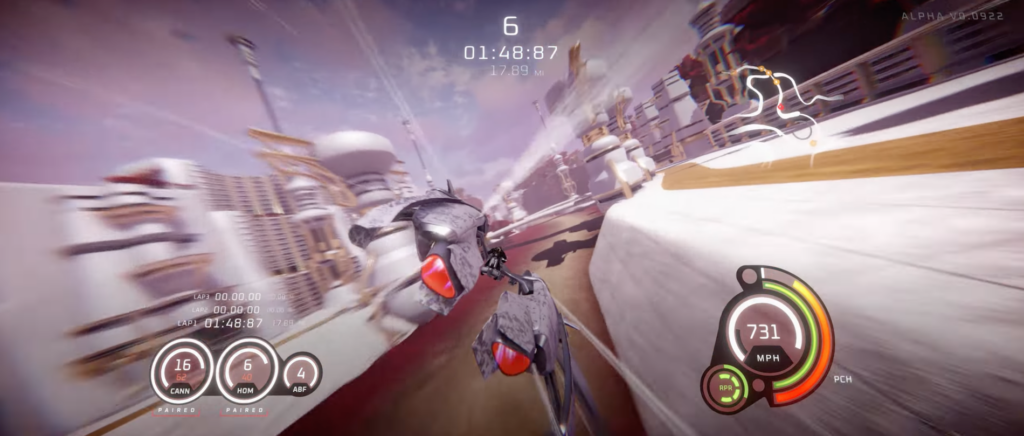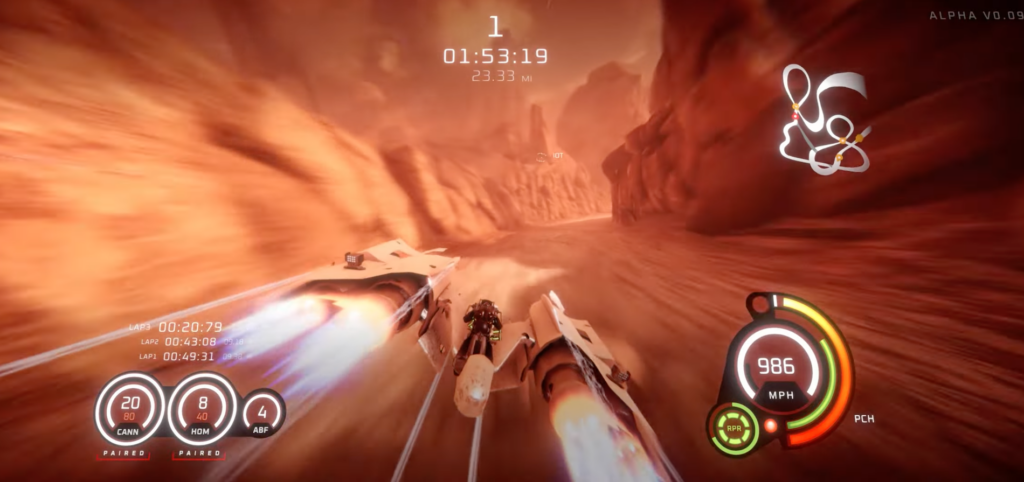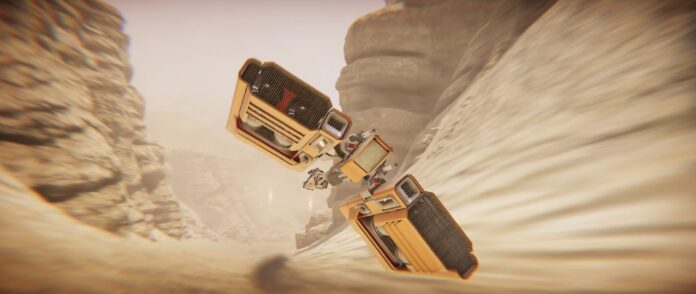Deathgrip is a sci-fi arcade racer in which pilots get pulled by overpowered engines through alien landscapes at brain-melting speeds. It’s unapologetically reminiscent of the Star Wars podracer games from the 1990’s but it’s insanely fast and incredibly fun. The game is made by a two-man team called Reclaim Interactive.
“I think racing games have fallen out of favor because there’s a lack of innovation as they focus more on graphics and realism than creativity and feel”, says founder and Art Director Brian Young. “But a modern game that captures the same intensity, creativity, and epic nature of podracing is what I’ve wanted to play for a long time now and I’m not alone in that thought.”
Young got his podracing fix through the Star Wars Episode 1 Racing games (SWE1R). “Deathgrip came about based on the nostalgia of SWE1R combined with my personal tastes for sci-fi action. There are other anti-grav racing games of course but they’ve never really captured me. I like the design of the Star Wars racers. Notably, it featured split paths, shortcuts, no resource pads, distinct track regions, and a mix of epic environments to traverse over rather than constrained on a tight road above it. Naturally I incorporated those aspects into Deathgrip.”
Experimenting with track design
Work on the game began in January 2020 as a basic concept that had the player piloting a hovercraft and clearing traffic with weapons in an attempt to escape the authorities. The idea was simple enough to keep the scope small for Young and a local programmer. “We started experimenting with track designs and wrote a new player controller that felt so good that it became our new focus. With the pivot to track-based gameplay, a lot more doors opened to possibilities. But so did the workload.”

In early 2021 the team was joined by seasoned programmer Hank ‘Coffeespiller’ Ditton. He was looking for a serious hobby project to exercise his skills beyond the requirements of his day job. A month later the original programmer left because the project grew beyond his capabilities and Reclaim Interactive went back to be a two-person team. “There’s always uncertainty when you start working with someone new”, says Young. “But I can’t overstate how grateful I am for Hank’s dedication and expertise these past couple years.”
Proponents of iterating
The roles in the team are clearly defined. Young handles everything from overall game design to art and audio, and Ditton does the programming. Apart from Young’s brother who occasionally helps programming minor features, the team hasn’t had any outside help. They build everything from scratch with the exception of some textures and sound effects. “This is what our creative process looks like. Do we need it? Would this be fun? How would it work? Is it feasible? Okay let’s try it”, says Young. “Not much to it when you’re a small team but we always have scope in mind and we’re proponents of iterating.”

“I haven’t touched on the lore of the game too much, but all the races take place on the same planet in different locations. The racers themselves were derived from war machines of similar designs. As tensions resolved their use migrated to an unrefined racing sport with little structure for rules and qualifications. This leaves room for imagination when considering different participants, teams, companies, and the types of vehicle they’d build.”
Looking cool
Both with vehicles and tracks Young approaches the designs with the intent of variation first and looking cool second. “With the racers, there are a number of factors to consider to make them distinct”, he says. “It comes down to cockpit location, engine count and shape, body style -more utilitarian, sleek, or a combination. Then loosely basing the concepts off what I need for base stats, such as bigger but stronger hull, lighter but faster acceleration etcetera.”

The same goes for the tracks. Young first went for a lot of variation with different scenery and distinct color palettes. So, tracks based on the usual relatable Earth settings like deserts, forests, glaciers, salt flats and such. Beyond that he created environments that look more alien. “It’s extremely important to have that human element to make these areas look inhabited and give the players a sense of scale. With the speed you’re traveling, however, a lot of the time these end up with epic superstructures. But once I have a setting in mind, it becomes a matter of choosing a difficulty and this drives the track complexity and determines what else to add for obstacles to make it fun.”
Early Access
With 90 percent of development done the team aims for an Early Access release on Steam in the coming months. “Our intention for Early Access is to get the game in a place where the only thing we need to do is add content. We’ll add minor game modes, double the racers and tracks, and explore what it would take to get player supported content in. Like many self-published indie games, a lot depends on success so we have our fingers crossed. My ideal situation is being able to make the move to full-time development to focus on creating new content, improving the existing visuals, and bring aboard a dedicated audio designer.”


